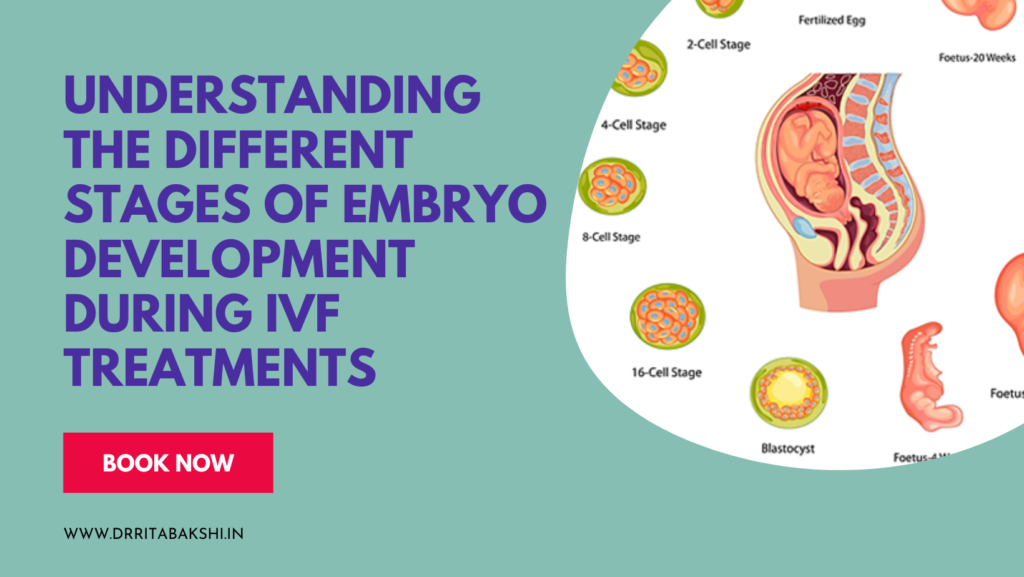Many couples trying to conceive want to know the process from egg retrieval to embryo transfer in the embryology lab. Understanding the embryo development process can make IVF seem less foreign to prospective parents.
Eggs from the patient’s ovaries (or donor eggs) are fertilized with sperm from the patient’s partner (or a donor) in an in vitro fertilization procedure. After this process, an embryo is transferred to the uterus in the hopes that it will implant and result in a pregnancy.
Before beginning IVF treatment, all patients must attend an onsite orientation session led by our nursing team. Partners are strongly urged to participate in this discussion. You can view our orientation program or attend a live session.
Here is a schedule of the IVF embryology lab procedures to help you visualize the process
Day 0: Retrieval Process
During the IVF treatment process, now is the time for your retrieval to take place. On day 0, your ovary will be stimulated to create follicles, and the eggs will be removed at this time as well. Currently, a count is being taken of the eggs that have been recovered, and their maturity and quality will be assessed.
The process begins with the collection of eggs, followed by the preparation of the sperm for insemination or ICSI. Then, between the hours of 4 and 6, after the eggs have been retrieved, they will be artificially inseminated or injected with sperm (ICSI). ICSI was carried out in this photograph of a fully developed egg (metaphase II).
Day 1: Fertilization Search
About 16-18 hours after insemination, the eggs are checked to see if they have fertilized, which is to say fused with the sperm. One must come from the egg and one must come from the sperm for fertilization to happen. An embryo is deemed improperly fertilized if it has too few or too many pronuclei. If they have been fertilized naturally, embryos are placed in a specific medium that is an analog of the tubal fluid in the human body.
An example of a normally fertilized embryo is seen in gold on the right of the image above. Above left, in black and white, is an improperly fertilized embryo.
Day 2: Testing Cell Division
A quick look is taken at the embryos to see if the process of cell division is happening. On day 2, the majority of embryos will have anywhere from two to four cells. On the right is a picture of a 2-day-old embryo that is only made up of four cells.
Embryos that have yet to begin to divide at this stage are condemned to fail.
We are waiting for the embryology department to decide whether or not a transfer should be performed on day 3 or 5. Consideration is typically given to the number of embryos in good health and the efficiency with which their cells divide.
Day 3: PGD Biopsy and Possible Transfer
On day 3, embryos normally have between 6 and 8 cells throughout their development. During your embryo transfer, a process known as “assisted zona hatching,” in which a hole is made in the embryo’s shell, will most likely be conducted.
It is also feasible for the embryo biopsy required for preimplantation genetic diagnosis (PGD) to occur at this time (PGD). If it is impossible to accomplish a transfer, embryos are now placed in a medium analogous to the fluid found in the uterus.
Day 4: Compacting
During the IVF treatment process, your embryos will soon form a morula, which is a group of about 16 cells. If compaction does not commence on this day, there is a decreased likelihood of the formation of blastocysts. For example, a morula that is four days old and has shrunk greatly may be seen in this photo.
Day 5: Blastocyst Forms
On day 5, the embryo will have reached the blastocyst stage. At this stage, it is possible to grade both the inner cell mass (ICM), which represents the fetal component, and the trophectoderm cells (TE), which express the placental part. Therefore, the transfer of embryos and the cryopreservation of mature blastocysts are standard practices on day 5 of the pregnancy. After the sixth day, any viable embryos that have not yet attained their full developmental potential are subjected to different cultures in preparation for prospective freezing.
Day 6: Last Transfer/Freeze
On day 6, embryos must either be transplanted if the transfer was not done on day 5 or frozen if the transfer was not done on day 5.
Any non-viable embryos are discarded. On day 6, an embryo has reached the end of its time in the lab before it must either be transferred or frozen in liquid nitrogen.
Embryos are cryopreserved for various reasons. Traditional IVF can transfer more embryos per cycle. If the non-transferred embryos are good, they can be kept and used later. Preimplantation genetic screening freezes embryos too. Embryo freezing might also postpone childbirth. Embryo cryopreservation lowers ovarian stimulation. Embryo transfers are cheaper and more accessible than IVF.
